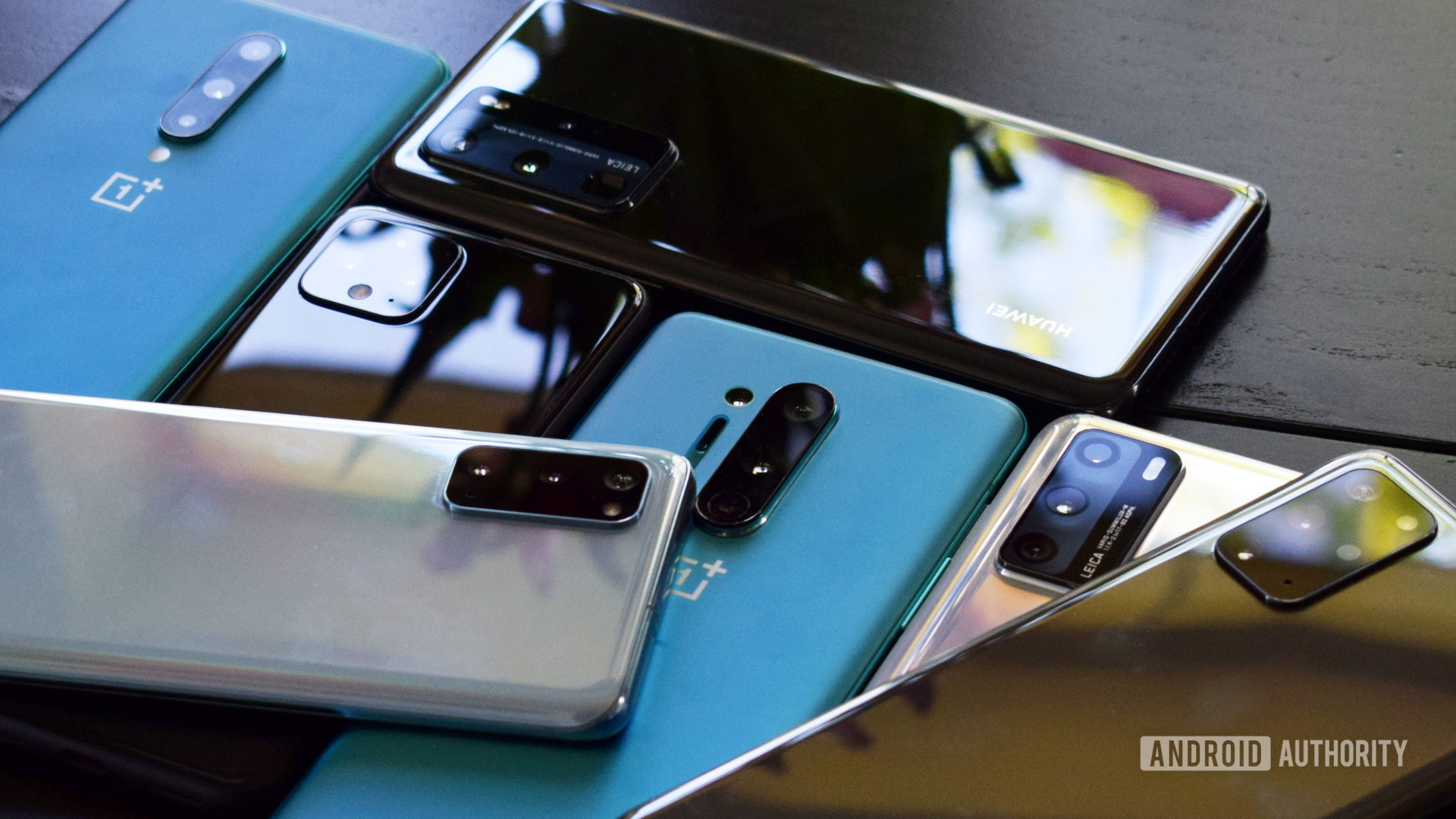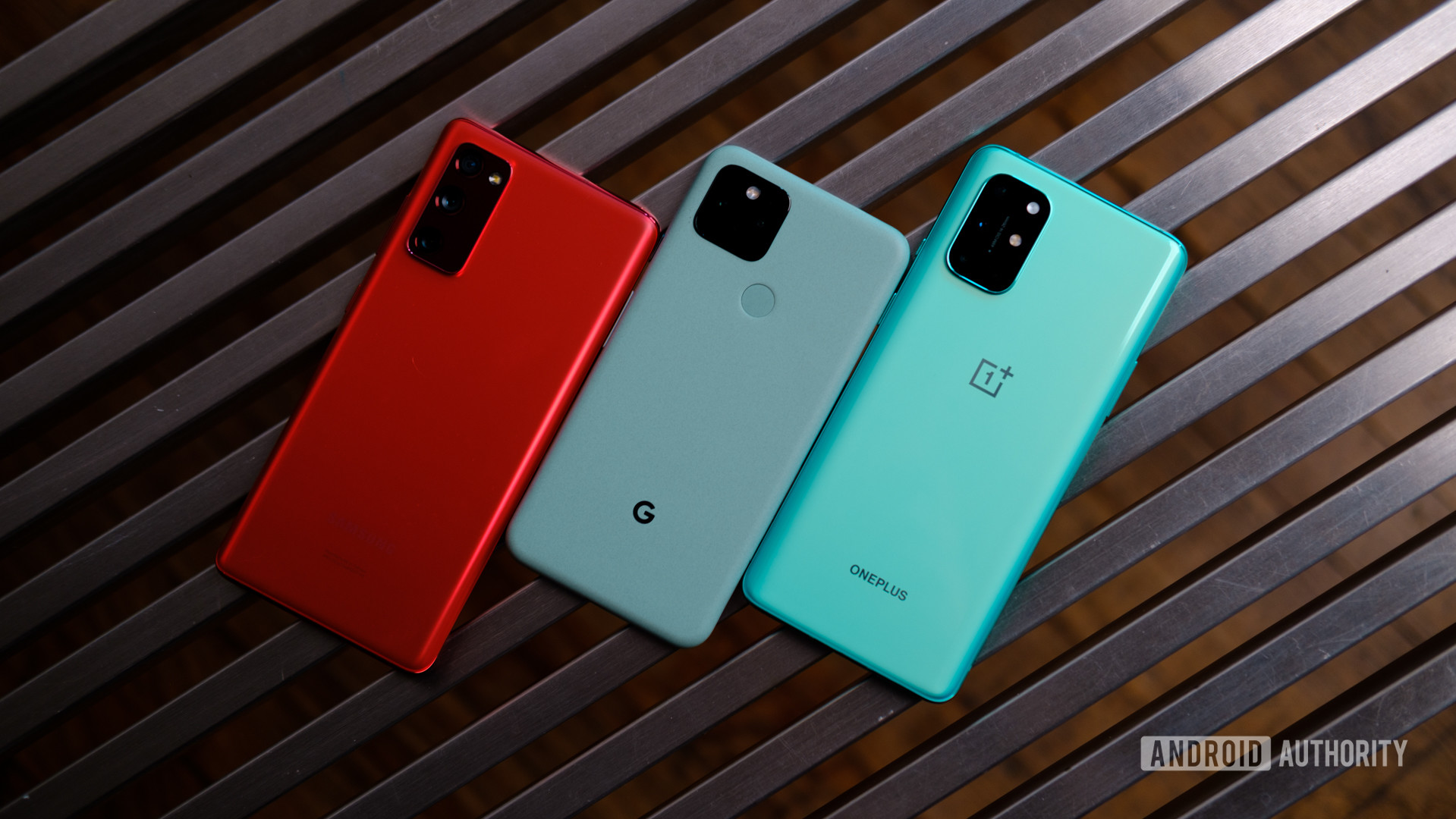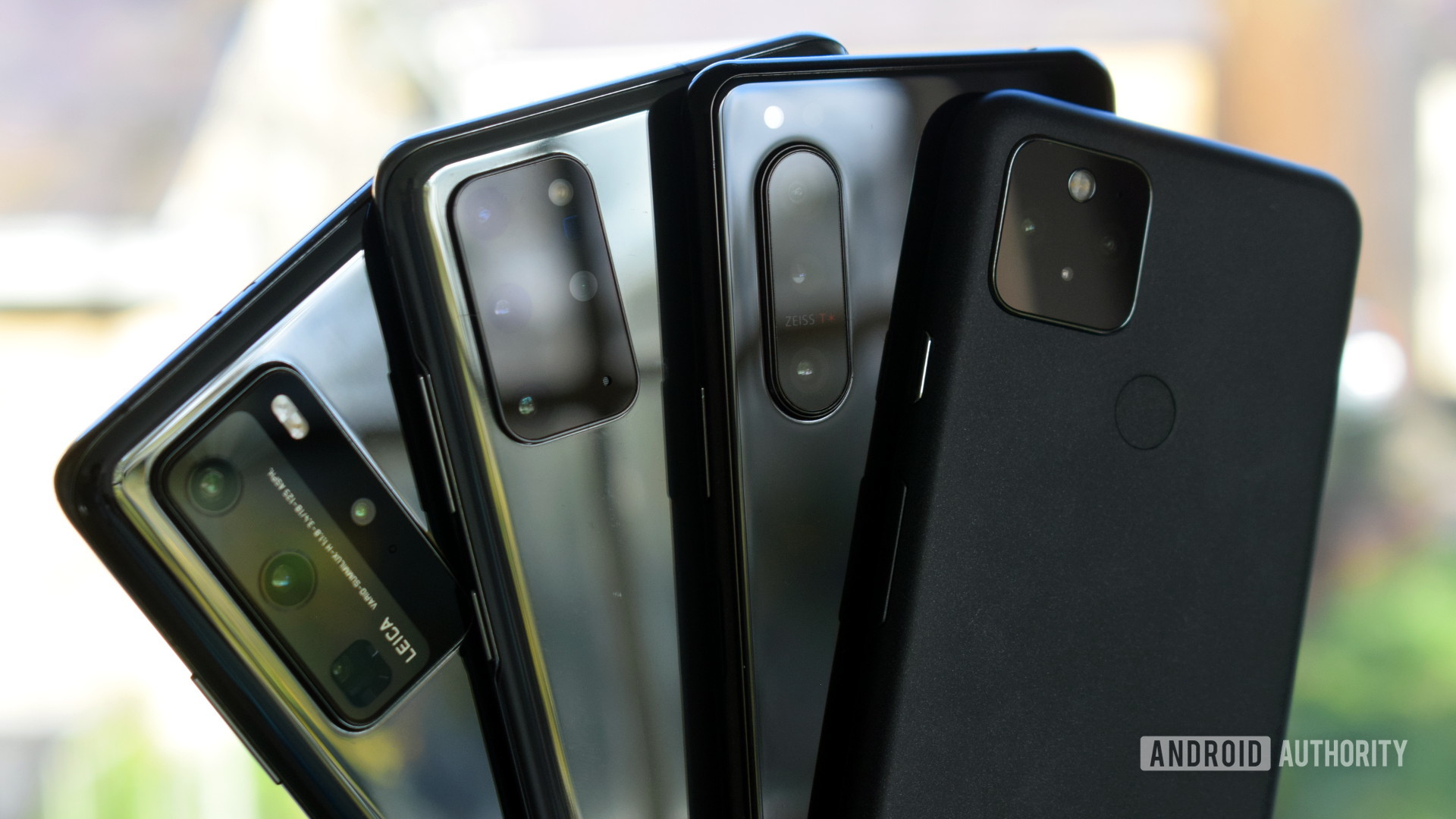Affiliate links on Android Authority may earn us a commission. Learn more.
Did smartphones get a lot more expensive in 2020? Let's look at the numbers
Published onDecember 19, 2020

The very best smartphone hardware can be expensive, and increasingly so based on recent yearly trends. It’s been a couple of years since phones broke the $1,000 price barrier, and it feels like prices have continued on their upward trajectory. But was this actually true in 2020?
To investigate prices, we’ve tracked average flagship smartphone prices from Apple, Samsung, Google, OnePlus, Xiaomi, LG, and Sony from over the past year. We’ve also recorded the prices for affordable entry-level models, such as those with smaller memory configurations and lower specs, as well as ultra-premium tier products. The results are interesting.
The results
Let’s jump right into the results. First, let’s take a look at the broad trends from the brands we’ve tracked.
Our data collection shows a noticeable increase in the typical price of the most expensive flagship models from across 2020. However, there was a barely noticeable increase in prices of affordable models and, interestingly, the average flagship price from these brands. This is partly due to some manufacturers switching from premium to affordable flagship pricing models over the course of the year. Handsets like the LG Velvet and Google Pixel 5 certainly don’t fit into the premium model category anymore but did affect the average price for flagship phones in 2020.
So, what’s the big picture? Well, ultra-premium 5G phones from a number of brands were certainly more expensive than last year. The very best hardware on the market cost more than ever, with an average price increase of ~$110 compared to last year. Likewise, some entry-level phones saw similar price hikes, particularly when it comes to Chinese brands like Xiaomi and OnePlus. 5G, it seems, pushed prices up for high-performing handsets.
You could definitely spend more on a flagship phone in 2020, but you didn't have to.
However, Samsung and a few other brands made the entry point into their ecosystems a little more affordable. In addition, a small number of companies opted for slightly less processing power and even lower prices, including the aforementioned handsets from LG and Google. This helped keep the average flagship price lower than otherwise expected. If you weren’t enticed by 512GB “Ultra” models, flagship phones in 2020 didn’t really cost any more than in 2019.
Ultimately though, there’s quite a big variation in price differences when we turn our attention to specific brands. So let’s dive a little deeper into the data.
Which smartphone brand raised its prices the most in 2020?

While average smartphone prices increased marginally, there was a much greater diversity of pricing strategies in 2020 compared to 2019. Broadly speaking, a lot of manufacturers indeed put their prices up in 2020. However, it’s worth taking a minute to look through the graph below a couple of times, as there were quite a lot of variations and intricacies to each OEM’s pricing strategy.
Samsung’s Galaxy S line has now become a little more affordable, but only because of the addition of the $700 Galaxy S20 FE. This model is actually cheaper than the $750 Galaxy S10e. A 512GB Galaxy S20 Plus costs $1,299, and the equivalent Ultra will set you back $1,499. That’s more than the $1,250 price tag of the Galaxy S10 Plus. However, Samsung did offer a 1TB S10 version last year costing a whopping $1,600. It’s a similar picture for Samsung’s Galaxy Note range. The Galaxy Note 20 is $50 more expensive than the Note 10 series across all storage capacities.
Related: The Galaxy S20 FE was Samsung’s most important phone of 2020
Samsung wasn’t the only brand to increase prices in 2020. The OnePlus 8 and 8 Pro cost $40 and $140 more than their predecessors, respectively. The OnePlus 8T also cost $150 more than the 7T. The 7T Pro wasn’t released in the US but would have been about $80 more than the 8T. Xiaomi’s Mi flagships, despite being primarily targeted at China, were more expensive than last year too. The Sony Xperia 1 II also saw an even more noticeable $250 price hike between 2019 and 2020 compared to its predecessor.
There's a greater range of pricing strategies in 2020, thanks to super mid-tier phones.
Perhaps unexpectedly, Apple didn’t increase its prices over the same period. The iPhone 12 costs exactly the same as the iPhone 11, despite the move to 5G. Google’s highest-end Pixel, on the other hand, was actually cheaper than last year. The Pixel 5 is more affordable than both the Pixel 4 and Pixel 4 XL, albeit with more mid-range hardware in tow. Likewise, LG’s Velvet was also cheaper than the LG G8 and G8X, owing to its more affordable processor.
Overall, the trend seems to be that high-end 5G smartphones mostly became a little more expensive over the past 12 months. However, these price hikes were offset by a growing market for affordable flagships that traded down some specs to save hundreds off their retail price. While some brands still remain attached to the old expensive flagship paradigm, others started experimenting well below the $1,000 mark — a positive sign for 2021 and beyond.
Are smartphones getting more expensive?

So, did smartphone prices increase in 2020? Yes and no. It’s somewhat complicated.
Typical price tags continued on a gentle upward trend but this was mostly being pulled along by the most expensive models. Already pricey 512GB models mostly become more expensive. The average 5G premium model now costs more than $1,000. However, virtually every brand retains a more affordable entry point too. The prevalence of Pro, Ultra, and other flagship variants highlight the wide range of market segments that manufacturers are trying to cover.
The average premium model now costs more than $1,000.
Brands seem acutely aware that many consumers are unwilling to pay in excess of $1,000 for a high-end phone. Affordable models like Samsung’s Galaxy S20 FE and Apple’s iPhone 12 are the most likely to ship in bulk compared to their more expensive siblings. At the same time, 2020 also saw a growth in the more affordable “super mid-tier” market, exemplified by the Pixel 5. These sub-$700 phones with 5G networking, great features, and sturdy designs offer everything you need for a top-tier experience without breaking the bank.
You could definitely spend more on an ultra-premium flagship phone in 2020 than in 2019 or 2018. However, the market is now also flush with new affordable flagships that offer equally good, if not better, value for money than phones launched in previous years.